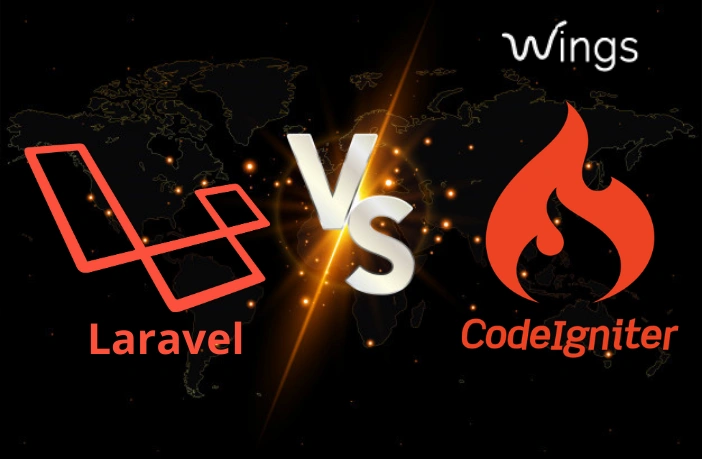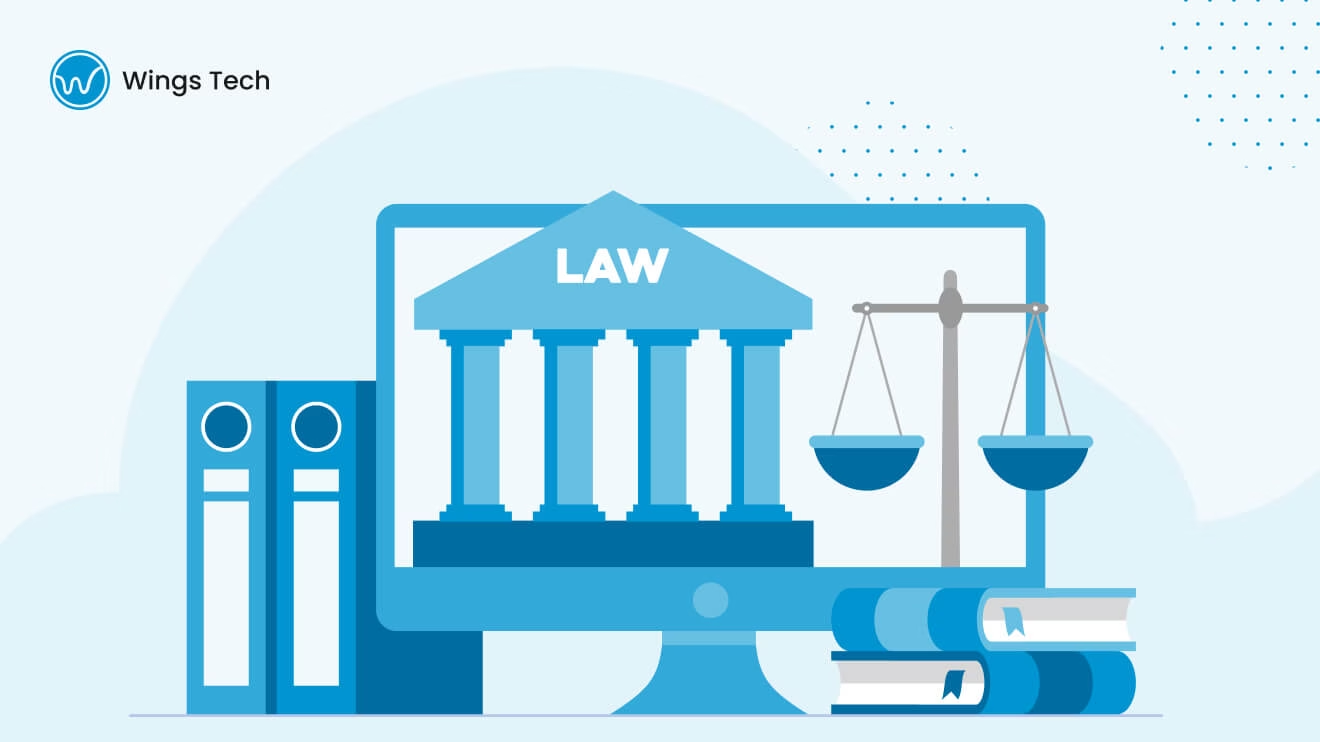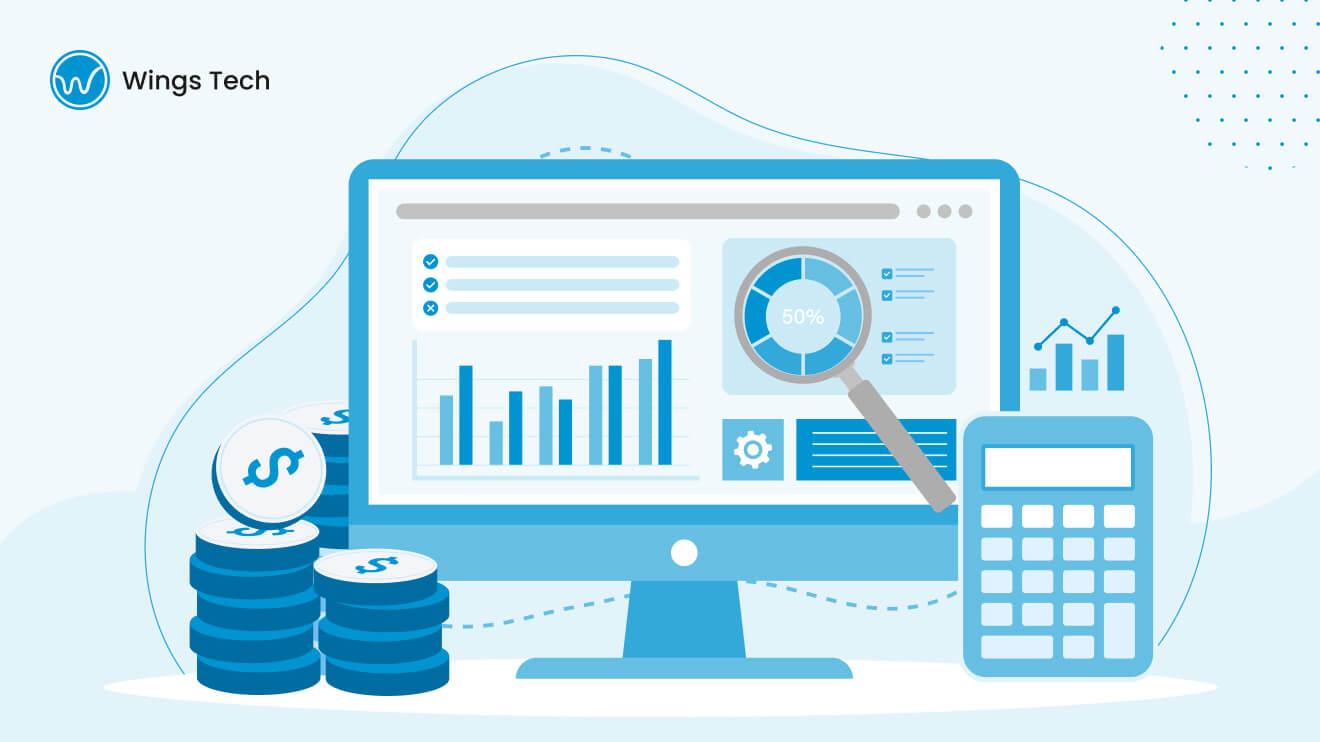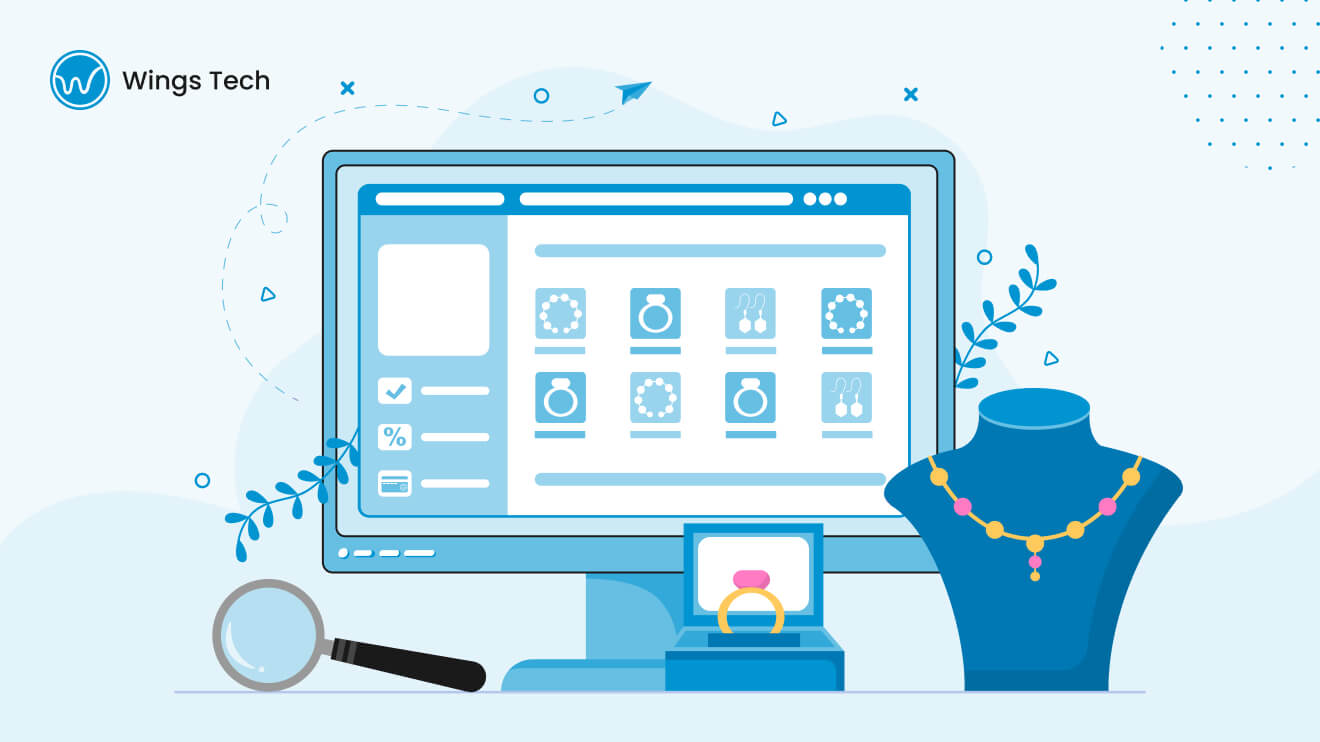Table of Contents
Confused about choosing between two languages, such as Laravel vs CodeIgniter? Choosing the wrong framework can crash your project even before it starts.
Between Laravel vs CodeIgniter, your app shouldn’t become another missed deadline or a costly experiment. This blog is your deep dive into these trending tech languages, highlighting everything you need to know for successful custom web application development.
Laravel is often termed the overachiever of PHP frameworks. It has a rich feature bucket, such as Eloquent ORM, Blade Templating, and testing flexibility, that IT staff love.
Laravel, essentially, is designed for ambitious architectures, but is heavyweight in execution. But what happens when deadlines are upon your team and you need a cutthroat solution?
CodeIgniter is the best option in these exact situations. It is lightweight and fast and offers a straightforward approach to getting the job done. It is perfect for MVPs, rapid prototyping, and simple development projects. Laravel speaks for enterprise projects while CodeIgniter is your best option for minimalist IT endeavours.
Read on the find out the history, features, pros, and cons of Laravel vs CodeIgniter in this piece below:
What is Laravel?
Laravel was born out of a sheer necessity in 2011. Taylor Otwell felt that CodeIgniter was too rigid and there should be a flexible way out for PHP applications without duct-taping login systems and routing tables. This thought was further shaped into the Laravel we know today.
Laravel, through his eyes, wasn’t just about writing code. It was about writing with clarity and organization. The first version brought organized routing, separate views, data migrations, and more, which was rare in PHP at the time. Today, in 2024, Laravel 11 is the most opinionated framework that stands out for its developer-first DNA.
What are the key features of Laravel?
MVC Architecture
Laravel follows the MVC (Model-view-controller) Pattern. It keeps your code organized and modular, which leads to easy updates and clear backend and frontend team roles. It is less risky to add new features as it saves money and avoids bugs during hard times.
Eloquent ORM of Laravel 11
Eloquent ORM helps you by making your code readable and expressive. Without messy SQL queries, you can speed up development and reduce database errors.
Blade templating engine
Front-end code via Laravel is increasingly manageable. Blade, rather than being a pretty syntax, helps you reuse layouts and inject dynamic content cleanly. Your dev team isn’t just about wasting cycles and figuring out your header. Your dev team is no more about wasting development cycles.
Routing & middleware
No rewriting core logic for URL routing repetitively. It lets you plug in checks without rewriting core logic and helps you create scalable infrastructure. For businesses, your platform grows with your user base without collapsing a single time.
Authentication & authorization
Built-in user logins and permissions system means less boilerplate code and fewer security risks. Get the best secure user management from day one. It is a deal breaker for apps handling personal data, ecommerce, or internal tools.
Task scheduling & queues
In times of delayed jobs and scheduled tasks, Laravel handles these tasks skillfully. Laravel offloads heavy tasks from the user-facing side. It improves app performance, which users like, and this reflects in their app interactions.
Composer integration
Composer is the package manager for PHP. Adding features without bloating the app is possible with composer, and the teams can expand the codebase cleanly over time.
Testing & Debugging Tools
Built-in PHPUnit support and Laravel Telescope help you with automated testing without unnecessary hassle. You can debug smarter because it catches the bugs before users do. It saves you from post-launch broken releases.
API Development
Laravel provides resource controllers and builds backend APIs that power mobile apps consistently and quickly. It is vital in today’s cross-platform world where businesses need smooth app interactions.
Real-time Capabilities
Using Laravel Echo and broadcasting, you can push live updates without refreshing your page. This enhances user engagement and makes your app feel responsive and even proactive.
Thinking about your next big project? See how Laravel saves you time and money without unnecessary hassle:
Contact us for a free framework assessment.
Laravel Use Cases: Who is Laravel For?
Enterprise web applications
Laravel’s structure and tools are made for large teams and complex requirements. Features like modular packages and service containers allow different departments to work independently without stepping on each team’s code.
Rapid prototyping
Wanna launch a successful functioning MVP in days and not weeks? Laravel’s Artisan CLI, out-of-the-box scaffolding, and sensible defaults help make this happen with enterprise reliability and a start-up’s expected speed.
E-commerce platforms
Laravel handles secure logins and payment integrations with ease, and these seamless integrations reduce development cycles drastically.
RESTful APIs & SPAs
Laravel’s API tools make it a strong backend for your apps. Whether it’s a single-page app or a mobile app, you can build it once and reuse it everywhere.
Microservices & serverless
With Laravel Vapor, deploy your apps to AWS with zero server management as it is native by design. It is ideal for modern businesses that want to scale smart and not hard.
Laravel’s developer happiness mantra worked, as it was a business model that helped developers build better software faster. The difference between Laravel vs CodeIgniter is that Laravel framework’s release cycle is intentionally aggressive as it helps with the modern development needs. You get performance without sacrificing the readability of code.
Act now! Your competition is already using Laravel to win.
What is CodeIgniter?
CodeIgniter does not necessarily demand attention; rather, it does its given functions very effectively. Initially released in 2006 by Rick Ellis of EllisLab, CodeIgniter became the first choice for developers who needed to develop web applications with ease, without any interference from complex configurations or rules.
While other frameworks offered additional tools and commands, CodeIgniter maintained its aim of simplifying processes, keeping things simple, and allowing developers to work according to their convenience.
It was built by cutting down the code used by ExpressionEngine (a CMS), with the result being a clean, lightweight framework. It won’t make you play by the book. It gives you enough structure to keep things organized, but never disturbs you. Use controllers, skip views or models if you want, and yet, CodeIgniter doesn’t care.
Since being transferred to BCIT in 2014 and subsequently to the CodeIgniter Foundation in 2019, the framework has continued to improve in the background. It now has improved performance, cleaner code, and the same philosophy: to become extremely convenient for developers.
What are the key features of CodeIgniter?
Lightweight
CodeIgniter is small, as small as less than 2 MB. This equates to quicker loads and quick responses, plus cost-effective hosting. You don’t require a huge server space to host them, and this is fantastic for frugal businesses or shared hosting.
Optional MVC Structure
You don’t need to be a master of complex architecture. Need to simplify things? Use one controller, and it still works. That is ideal for small projects or when it is crunch time and when it is better to have simplicity over technicality.
Fundamental Database Queries
Instead of writing complicated and intricate SQL queries by typing them out, CodeIgniter lets you build them line by line using plain language. It reduces errors and makes your own code readable and maintainable.
Helpful Built-In Functions
These kinds of functions, like processing forms, mailing, data validation, or file uploads, are handled with ease. No more digging around for third-party packages or installing additional packages, it’s all part of the CodeIgniter package.
Simple Configuration
Forget about long command lines. You can install CodeIgniter using a text editor and some configurations. Installation is done in minutes, not hours.
Built-In Security
There is built-in basic protection for common attacks like CSRF, XSS, and SQL injection that is easy to turn on. You do not need to be a security expert to protect your app.
Modular Architecture (HMVC Support)
If your app does grow big in size or user count, you can divide it into independent, reusable modules. It’s like dissecting a puzzle into neat, manageable pieces—simpler to create and fix.
Backward Compatibility
CodeIgniter updates rarely break your existing code. That’s a blessing if you’re rewriting an older app and don’t want to do everything over again.
Fast Deployment
You can have a functional prototype up in hours and do not have to toil around for days. Ideal for first feedback, client presentations, or having a minimum viable product (MVP) up and running quickly.
Strong Community & Documentation
There is an enormous base of followers, a lot of plugins, and very readable documentation. You will not waste time digging for help as it’s all easily available.
See How CodeIgniter Fits Your Project Needs
Where CodeIgniter Works Best
Startups & MVPs
CodeIgniter enables quick development and deployment without technical barriers. When you need to launch fast with limited resources, this is your best bet.
Legacy PHP project refactoring
If you already have an existing old PHP application, CodeIgniter assists you in upgrading it smoothly without scrapping the whole thing and starting all over again.
RESTful APIs and backend systems
When designing an API to host a mobile application or a frontend user interface, CodeIgniter supports seamless and efficient performance.
Shared hosting
While using an affordable hosting plan, CodeIgniter runs smoothly without having to overuse server resources.
PHP for students or learning programmers
It’s great for beginner PHP students or programmers because it has a simple structure and no hidden tricks.
Admin panels & custom CMS
Need a quick backend dashboard? CodeIgniter allows you to build it your way without any unwanted bloat.
High-speed web apps
Performance is a natural characteristic. PHP founder Rasmus Lerdorf made it clear that CodeIgniter is “faster, lighter, and the least like a framework.”
Is CodeIgniter perfect for you? Book a Call Today to know!
IT today overengineers the simplest things, and in the discussion of Laravel vs CodeIgniter, CodeIgniter stands out. It trusts developers to engineer their development processes. It’s not just fast, but it’s reliable and refreshingly reasonable.
Pros and Cons: Laravel vs CodeIgniter
| Aspect | Laravel: Pros | Laravel: Cons | CodeIgniter: Pros | CodeIgniter: Cons |
|---|---|---|---|---|
| 1. Learning Curve | Intuitive syntax and great documentation for experienced developers | Steep learning curve for beginners | Easy for beginners, can be setup with a straightforward process | Lacks advanced features, less guidance for complex apps |
| 2. Security | Strong built-in security features (CSRF, XSS, SQL injection) | Still limited by PHP’s inherent insecurities | Good basic security tools | Security tools must be manually enabled, and less comprehensive |
| 3. Performance | Scalable for large projects | Can be slow and resource-heavy on small servers | Very fast and lightweight, minimal server load | Not ideal for very large or complex apps |
| 4. Architecture | Follows a robust MVC pattern, with clear separation of logic | Can be complex for small/simple projects | Flexible MVC, not strictly enforced | Loose structure can lead to messy code in large projects |
| 5. Database Handling | Eloquent ORM simplifies database work | ORM can be overkill for simple queries | Query Builder is fast and easy to use | Lacks advanced ORM features |
| 6. Community Support | Large, active community and frequent updates | Frequent updates can disrupt projects | Long-standing community, lots of legacy resources | Smaller, less active than Laravel’s community |
| 7. Documentation | Comprehensive and well-maintained | Some advanced topics lack depth | Clear, concise user guide | Less detailed for advanced or modern use cases |
| 8. Built-in Features | Many built-in tools: auth, queues, mail, testing | Can feel bloated for simple apps | Minimalist core, easy to extend | Fewer built-in features, more manual work |
| 9. Real-time Support | Supports real-time apps (Laravel Echo) | Real-time features are complex to set up | Not built-in, but possible with extensions | Real-time features require third-party tools |
| 10. Customization | Highly customizable, modular packages | Customization can add complexity | Very flexible, minimal restrictions | Too much flexibility can cause inconsistency |
| 11. Hosting | Deploys easily on major cloud providers | Needs powerful hosting for best performance | Runs well on shared/budget hosting | Not optimized for cloud-native deployment |
| 12. Cost | Free, but advanced features may require paid tools | Higher hosting and dev costs for big projects | Low-cost, minimal server requirements | May require more manual coding, increasing dev time for big apps |
| 13. Testing | Built-in testing tools and support | The testing setup can be complex for new users | Simple, manual testing is possible | No dedicated built-in testing framework |
| 14. Upgrades | Regular updates bring new features | Upgrading can be time-consuming and risky | Backward compatibility prioritized | Major upgrades are rare and can lag behind PHP trends |
| 15. Use Cases | Great for enterprise, e-commerce, APIs, and complex apps | Overkill for simple or static websites | Perfect for small to medium projects, MVPs, and rapid prototyping | Not suited for highly complex, enterprise-level applications |
When to Choose Laravel?
If you are building a big and complex digital product like an online store or a service platform, Laravel can manage the user influx without any chaos. A huge number of users and data complexity are right in Laravel’s wheelhouse.
- Laravel works best when you have a dedicated team and a fair budget. With organized code from Laravel, your project gets easier to maintain and grow in the long run.
- With data ready features like login systems, user roles, and tools to handle Data APIs, this means that you don’t have to build everything from scratch. Save time and reduce your errors.
- Planning for your future upgrades and new features, Laravel is built for those kinds of huge future upgrades. Without your app becoming unstable, grow and expand with Laravel.
- Built-in tools for speed and quality are a godsend for developers, as these tools help launch faster with fewer bugs.
If you are looking at a long-term project where stability, speed, and future expansions are all part of the equation, you need Laravel as your backend.
When to Choose CodeIgniter?
Not every project needs all the bells and whistles. Sometimes, you just need to build something that works—and fast. That’s where CodeIgniter comes in.
Not every project needs to go the full length, sometimes, you just need to build an MVP that simply works. Where CodeIgniter comes in is building this MVP faster than you can finalize your marketing plans.
- It’s super lightweight and takes very little time to set up. You can go from idea to working prototype without weeks of prep.
- Ideal for smaller projects, tight budgets, or early-stage startups. If you need to launch something fast and prove it works, CodeIgniter won’t slow you down.
- It runs well even on basic, affordable servers—perfect for shared hosting or low-cost deployment.
- And if your developers are just starting or you don’t have a large team, CodeIgniter’s clean structure and clear documentation make it easier to learn and use.
Which is better – Laravel vs CodeIgniter?
Laravel or CodeIgniter? Your choice ultimately depends on your vision, timeline, and expansion plan. Fireworks in the name of features don’t build businesses; rather, what does build them is immaculate execution. WingsTech becomes more than your development partner; we precisely pick the right tools and integrate them into your legacy/new systems with your workflow.
We help you make the right framework choice when you have burning questions like Laravel Vs CodeIgniter on your plate. Still wondering about your framework choice? Let’s have a call today!









